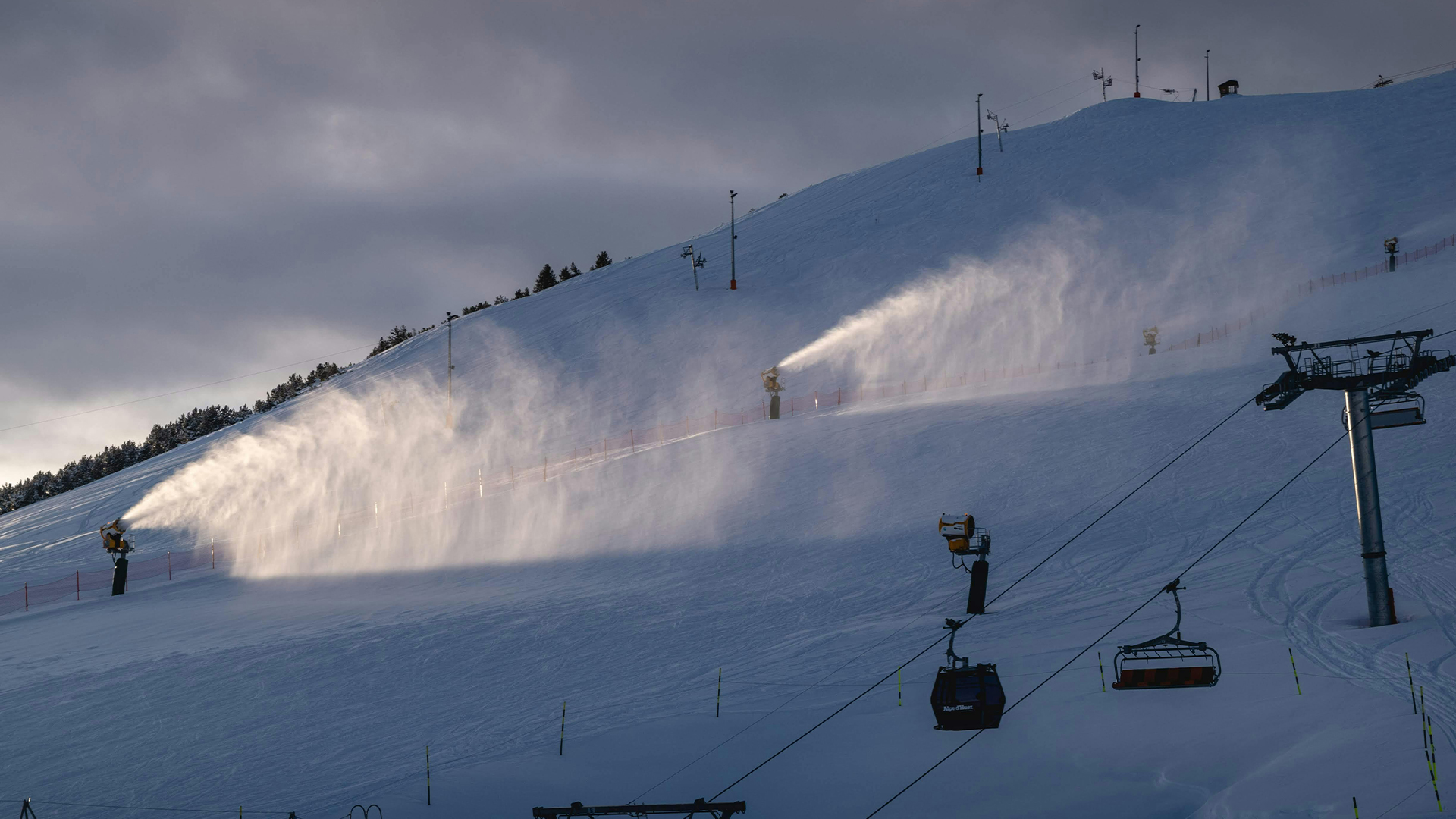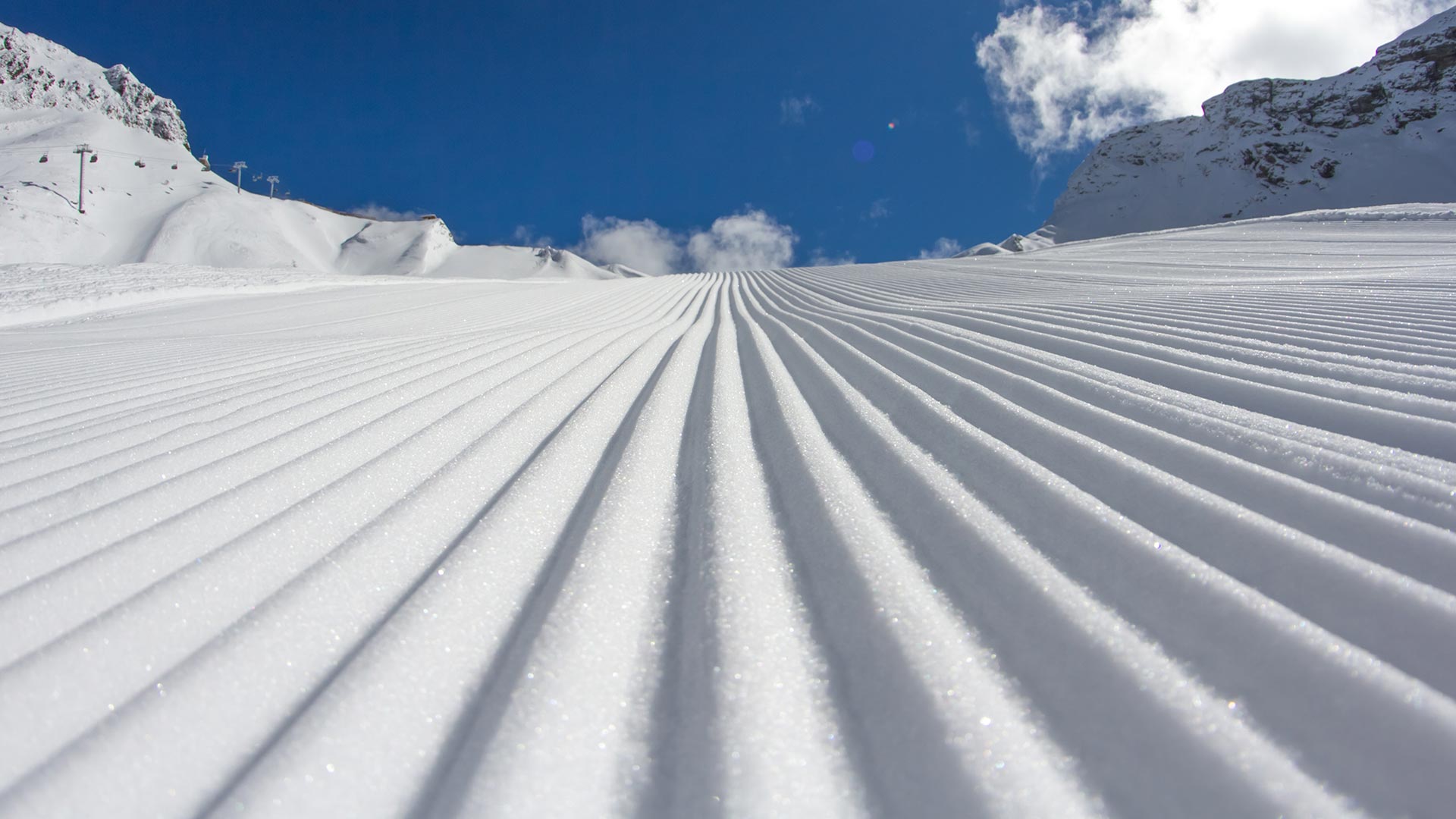Artificial Snowmaking – Good or bad?
Over the past few decades, many ski resorts in the Alps have reported a decrease in snowfall and a shortening of the ski season. Or rather a ‘shifting’ of the ski season, with later starts and later finishes which have extended the skiing into May.
Resorts are adapting by investing in snowmaking and diversifying offerings and the higher, bigger resorts are receiving the most investment to tackle climate change. Nevertheless, climate impacts are becoming a significant concern for the ski industry.
Artificial Snowmaking
The biggest step to address these challenges is the investment in snowmaking technology to supplement natural snow, especially in the early and late parts of the season.
Resorts like Morzine and the surrounding Portes du Soleil area are increasingly relying on snow cannons to supplement natural snowfall, especially at lower altitudes. If climate change continues to affect snowfall, snowmaking technology may become more advanced and widespread.

Artificial Snow versus Natural Snow
There are several advantages of Artificial Snow, not to mention the very positive fact that it is easier to ski on and control, (in terms of its supply) so operators can ensure ski resorts open on time and a consistent snow base across the mountain.
- Consistency & Control:
Artificial snow is created in controlled conditions, so resorts can make it when needed, and they can place it where needed, by moving canons around to the most impacted areas. This helps maintain consistent conditions on the slopes. - Extending the Season:
Artificial snow can help extend the ski season by covering slopes earlier in the season and keeping them open longer into the spring, especially during warmer-than-usual winters. - Higher Density:
Artificial snow is usually denser than natural snow, which can lead to a more stable base for skiing. It is more suited to warmer temperatures and remains easier to use than the ‘real thing’ when conditions become mild. It can be created in +2C.

- Reliability:
In regions with unpredictable or low snowfall, artificial snow can ensure a ski resort remains operational throughout the winter season.
The biggest drawback of natural snow is its unpredictability. A season that starts off with heavy snow could end with a warm spell, leaving resorts with bare patches and less reliable conditions.
Artificial snow is much more reliable in terms of availability. Snowmaking can be planned, and resorts can create a base layer or top up slopes whenever they choose, provided temperatures are cold enough
Artificial snow is generally denser than natural snow. It tends to pack down faster, creating a more consistent, harder surface, which can be good for creating a smooth, even base on slopes - Finer, more powdery and easier to use:
Artificial snow might create a more dense base but it has a fine top layer too. It therefore not only skis better than the real thing, (especially in December and January), but modern designs of skis and boards, and styles of skiing, have both adapted to artificial snow. The fine texture it creates when ‘scraped’ off hardpack – which tends to happen in busy periods – becomes easier to ski on, and it accumulates in a powdery form in pockets on the piste. - Case Study 2023:
The 2023 ski season was especially low for precipitation (and consequently snowfall) and resorts became very reliant on artificial snowmaking which did little to preserve the reservoirs that supply the canons, making most of them nearly dry by April. However, the overall ski conditions were excellent throughout the season, and far better than previous years where enough natural snow fell to enable less use of the canons.

Can they make snow in + degrees (above freezing)?
Yes, snow cannons (or snow guns) can operate in temperatures above freezing, but their efficiency greatly depends on the exact conditions. Generally, snow guns work best when the air temperature is between -2°C (28°F) and -5°C (23°F). However, some newer technologies and advanced snowmaking systems, including fan guns and low-energy snow guns, can operate in slightly warmer conditions, such as 0°C (32°F) or even +2°C (35°F), with reduced efficiency compared to colder temperatures.

Environmental Impact:
Natural Snow:
Natural snowfall is free of the chemicals and energy costs that are associated with artificial snow. However, the amount of natural snow (and when it falls) can be VERY unpredictable due to climate change, which is affecting snowfall patterns in many regions.
Artificial Snow:
Making artificial snow uses a significant amount of water and energy. In areas where water is scarce, the environmental footprint can be substantial. Fortunately in the Alps, a lot of natural rainwater is collected in specially made reservoirs. Furthermore, snowmaking operations may use chemical additives (such as anti-icing agents) that could affect the local ecosystem.

Conclusion:
In terms of skiing quality, artificial snow can be just as good or even better in certain situations, especially in ensuring that there is snow on the ground when needed. However, for pure natural beauty, powder conditions, and sustainability, natural snow is usually preferred. Artificial snow's main advantage is its reliability in regions with unpredictable weather or where natural snow is scarce.
Back to Blog






